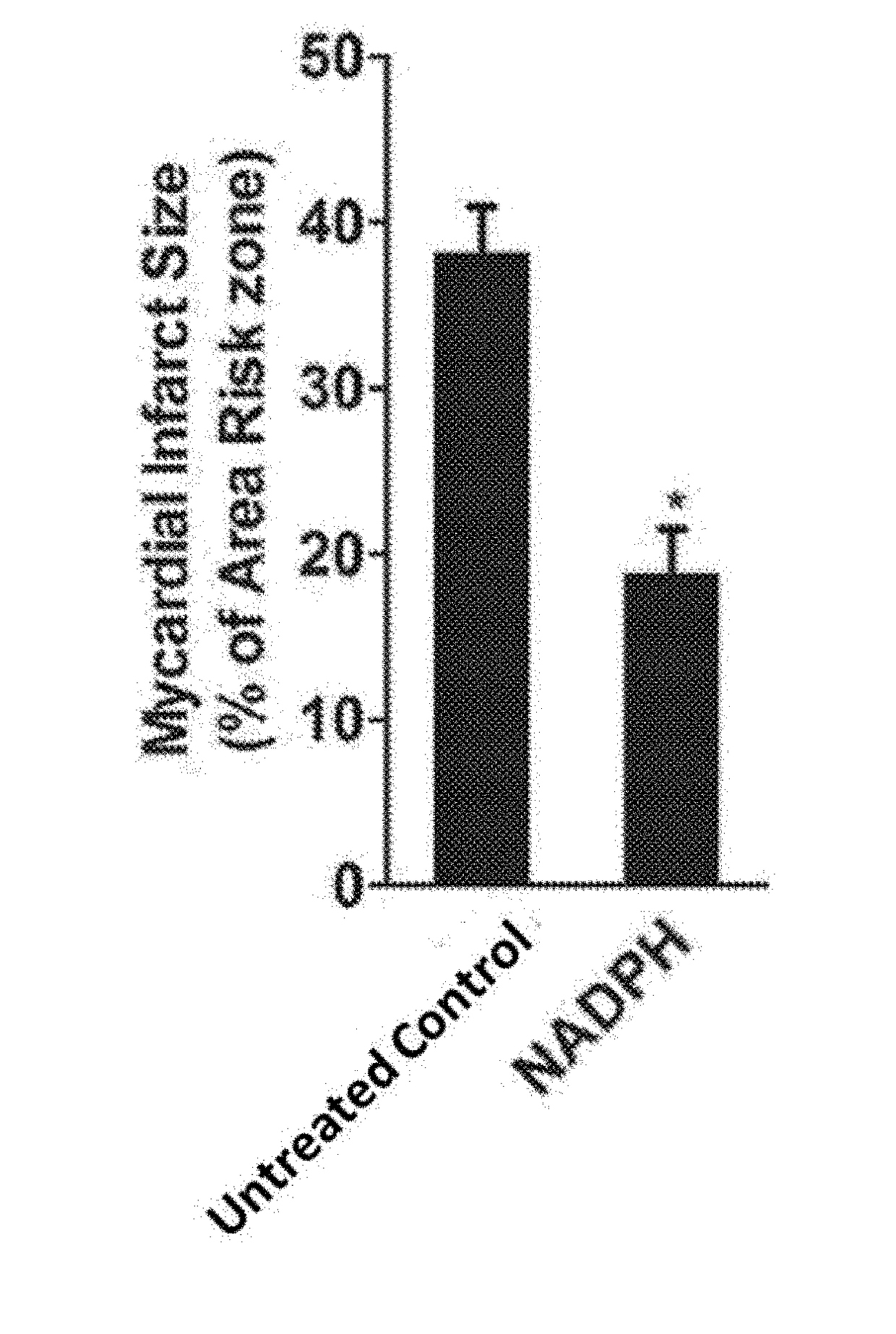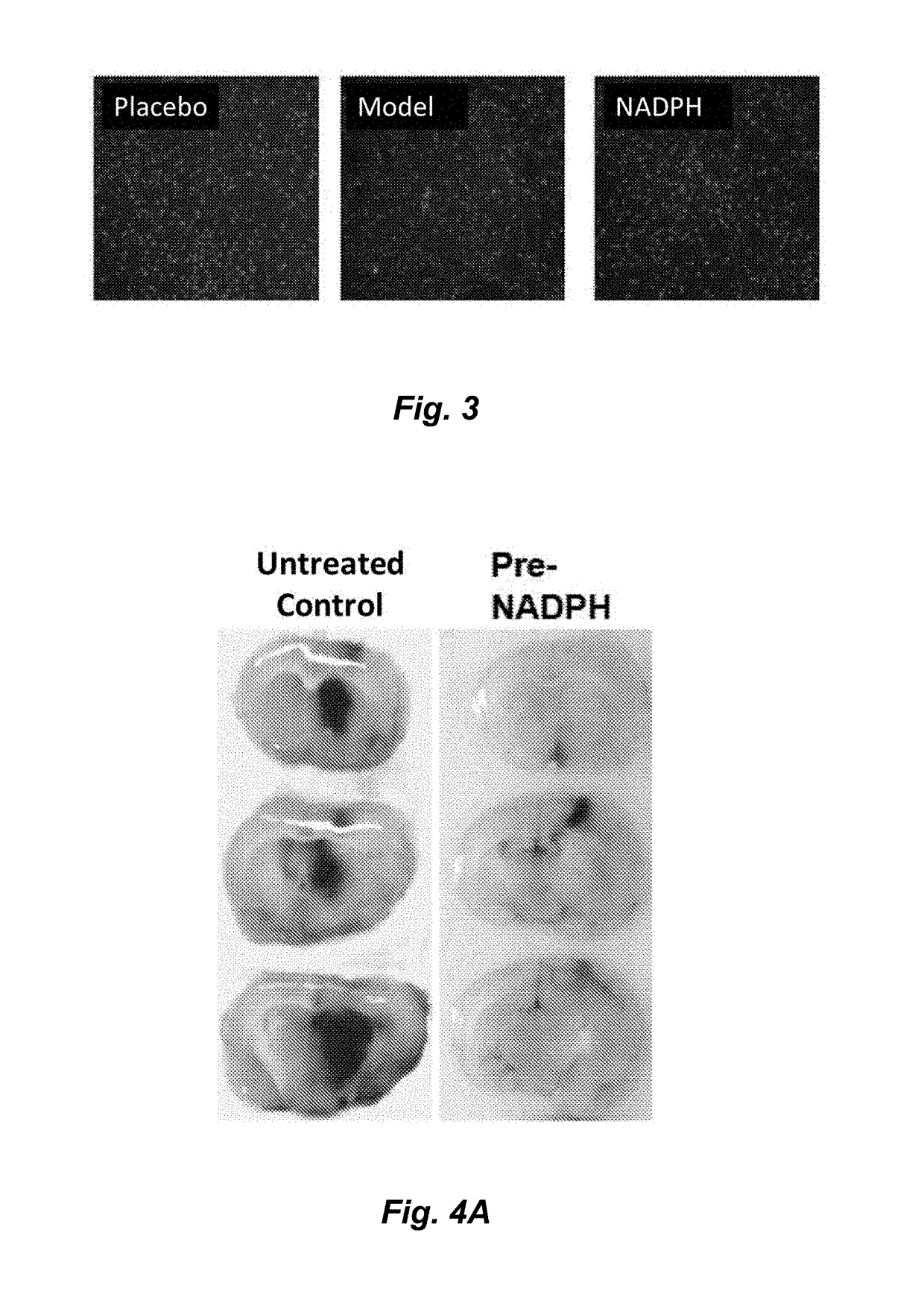Use of nadph in preparing medicines for treatment of heart diseases
a heart disease and nephropathy technology, applied in the field of heart disease treatment with nadph, can solve the problems of no study so far to use napdh in the treatment of heart diseases, the pathogenic mechanism of cardiocerebral ischemia disease is complex, and the burden on global health care and medical resources is heavy, so as to maintain the reduce ischemic myocardial damage, and normal permeability of blood vessels
- Summary
- Abstract
- Description
- Claims
- Application Information
AI Technical Summary
Benefits of technology
Problems solved by technology
Method used
Image
Examples
embodiment 1
taining NADPH
[0020]The capsule of this embodiment comprises the following ingredients:
[0021]20 g of NADPH, 60 g of suspending agent microcrystalline cellulose; 0.04 g of preservative tert-butyl-4-hydroxy anisole; 2 g of lubricant magnesium stearate; with 200 g of filling agent lactose added.
[0022]The preparation method thereof comprises the following steps:
[0023]Weighing and mixing NADPH and medicinal auxiliary materials as listed in the prescription above; filtering the mixture for 3 times by using a 60-mesh sieve, and filling the filtered mixture into capsules.
[0024]Conventional auxiliary materials used in the preparation method comprise one or more selected from, but are not limited to, the following ingredients: filling agent, disintegrating agent, lubricant, adhesive, corrigent, suspending agent and preservative.
[0025]Specifically, the filling agent can be replaced with one or more of the following ingredients: pregelatinized starch, mannitol, chitin, microcrystalline cellulose...
experiment examples
[0034]To prove the technical effect of the present invention, the following experiments are performed.
experiment 1
The Protective Effect of Exogenous NADPH on Primary Endothelial Cells HUVEC
(1) Experiment Materials:
[0035]The primary endothelial cells HUVEC were purchased from ATCC (the U.S.). Cryopreservation conditions: 2 mL cryopreservation tube, with 1.6 million cells per tube in 70% high-glucose DMEM, 20% domestic fetal bovine serum (FBS), and 10% DMSO.
(2) Experimental Scheme
[0036]Culturing endothelial HUVEC cells: Culture condition: 37° C. (5% of CO2 and 95% of air), saturated humidity, high-glucose DMEM culture medium supplemented with 100 U penicillin, 100 U streptomycin per liter and 10% domestic FBS; when cells grow to 80-90% confluence, carrying out cell passage by using trypsin-EDTA digestion. Passage frequency: passaging 5×105 cells per bottle every 2-3 days. HUVEC cells in logarithmic growth phase are treated with trypsin-EDTA digestion solution to detach adherent cells. Cells are collected, counted and resuspended by using a medium containing 10% FBS to obtain a cell solution conta...
PUM
| Property | Measurement | Unit |
|---|---|---|
| Pharmaceutically acceptable | aaaaa | aaaaa |
Abstract
Description
Claims
Application Information
 Login to View More
Login to View More - R&D
- Intellectual Property
- Life Sciences
- Materials
- Tech Scout
- Unparalleled Data Quality
- Higher Quality Content
- 60% Fewer Hallucinations
Browse by: Latest US Patents, China's latest patents, Technical Efficacy Thesaurus, Application Domain, Technology Topic, Popular Technical Reports.
© 2025 PatSnap. All rights reserved.Legal|Privacy policy|Modern Slavery Act Transparency Statement|Sitemap|About US| Contact US: help@patsnap.com



